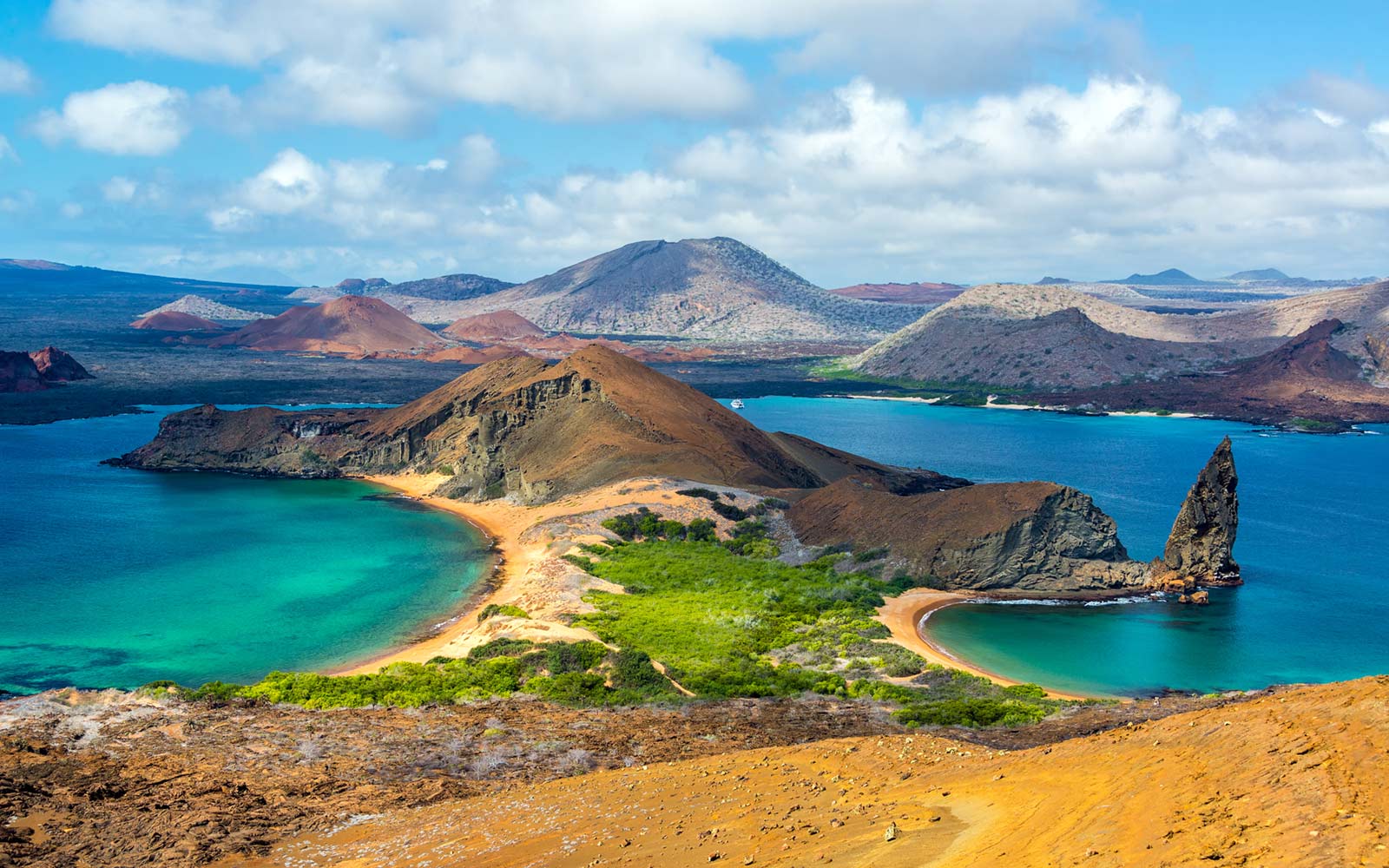Visiting the Galapagos Islands is one of the most exciting, unusual, and downright unique experiences it is possible to have. This is truly a place like no other, a tiny corner of the world home to some of the most amazing and bizarre animals, birds and plants on the planet, and a completely one-of-a-kind ecosystem unlike anywhere else.
A trip to the Galapagos is not undertaken lightly. This is not the sort of adventure where you just toss a few things in a carry-on and head out the door. As a remote, protected spot it can be tricky to get there, and given its uniqueness and special qualities it is well worth thinking ahead about how to go about the entire experience.
Visiting the Galapagos is a once-in-a-lifetime trip, with a combination of fascinating critters, wild remote scenery and gorgeous paradise beaches. Here we give you everything you need to know to make your adventure to the birthplace of evolution as special as it can possibly be.
Getting there
The best and most convenient way to experience the best of what this magical place has to offer is with a cruise to the Galapagos Islands. Travel in comfort and style, and avoid the hassle of carrying unnecessary luggage around with you from hotel to hotel. A cruise also allows you to go further, and explore the smaller, more remote islands which are harder to get to under your own steam.
Of course, it is perfectly possible to visit the Galapagos independently. Flights from the mainland land on Baltra Island and San Cristobal Island, and there are a huge amount of boat and ferry trips from Baltra, San Cristobal and Puerto Ayora on Santa Cruz, the most popular tourist hub.
Where to stay
Although the Galapagos archipelago consists of a huge number of islands, only four are inhabited and suitable for an overnight stay.
Santa Cruz and the town of Puerto Ayora is the main tourist hub, and has a variety of hotels, hostels, and guesthouses, as well as some genuinely excellent restaurants.
Isabela is the largest island in the archipelago, and as well as some delightful places to eat and stay, offers the opportunity to explore the Volcano Sierra Negra.
Floreana and San Cristobal both also have small towns with a variety of accommodation options and some nice little local food joints. For an even more low-key experience, these are a great shout.
What to see
The main event of the Galapagos Islands is its fascinating and unique wildlife. Many of the species native to the archipelago are not found anywhere else in the world, and the chance to see some of these extraordinary animals in their natural habitats is a genuinely awe-inspiring experience. The variety and diversity amongst the species from island to island was the inspiration behind Charles Darwin’s Theory of Evolution, making this place the centre of one of the greatest scientific discoveries of all time.
Birdwatchers will have a field day, with over 100 different species of birds found on the islands. The blue-footed boobies are a delightful must-see, particularly during their mating season dances. Galapagos penguins are unfeasibly cute, the second smallest penguins in the world. Galapagos flamingos feast on brine shrimp, which gives them a far brighter pink than flamingos in the rest of the world. Finally, the thirteen sub-species of Darwin’s finches, subtly different on each island, are what crystallised Darwin’s theories and drove his discoveries.
Probably the most fascinating and remarkable residents of the Galapagos are its reptiles. Giant tortoises are probably the most famous, found on Santa Cruz and across the archipelago. These massive creatures are among the longest-lived animals on the planet, some living up to 150 years, and are an eye-opening sight. The marine iguanas are unique to the islands, and are bold as you like, meaning that you can swim alongside them if you are brave enough!
Given the size of the islands mammals are in shorter supply, but sea lions are everywhere, popping up across the archipelago, sometimes where you would least expect them. Dolphins and whales are also regular visitors to the surrounding seas.
What to do
Apart from immersing yourself in nature, the Galapagos has plenty to keep you occupied. The island chain is full of gorgeous, white sand beaches, where you can swim in the crystal-clear waters or relax on the sand, surrounded by sea lions, iguanas and birds. Santa Cruz has some of the best, but there are superb options on every island.
If you are looking for something a little more adventurous, the hike up the Volcano Sierra Negra on Isabela is a great undertaking, ending up with some breathtaking views right across the archipelago.
When to go
The climate is pretty great all year round, with warmer months from December to May. Visitors tend to plan their trips around animal activity, like tortoise hatching season in December and January, or to catch the mating rituals of the blue-footed boobies in May. Peak times for visitors are in December, January, June, July and August, so those are the months to avoid if you prefer a more solitary experience.

